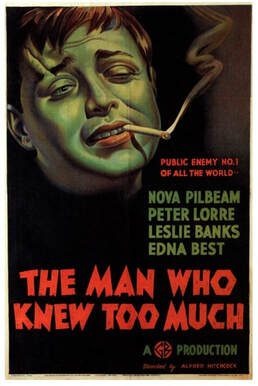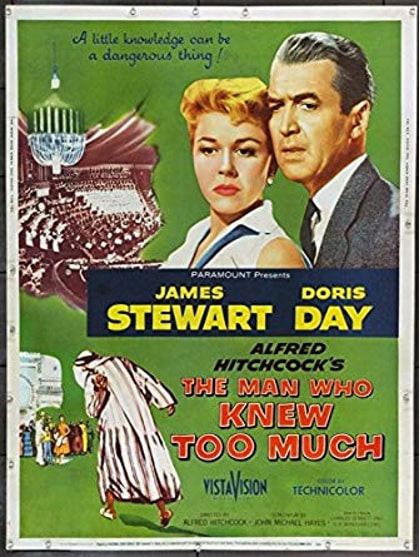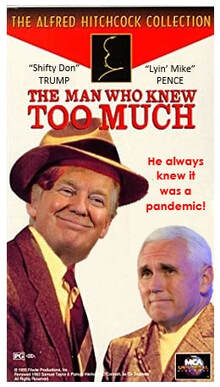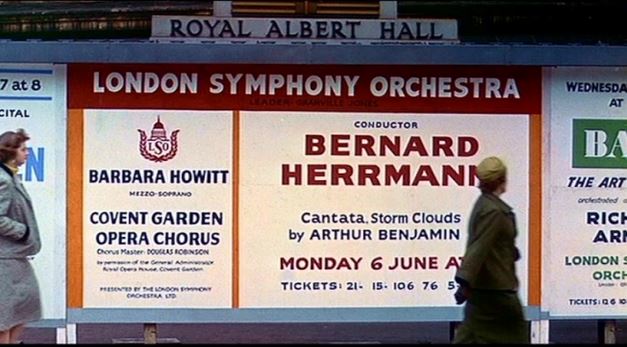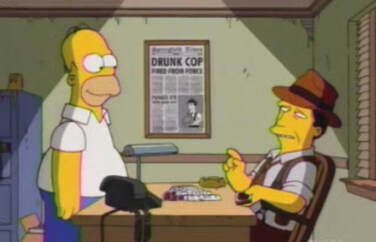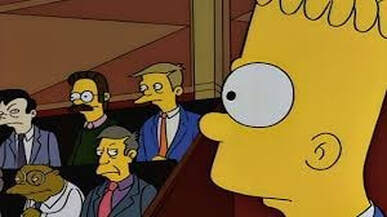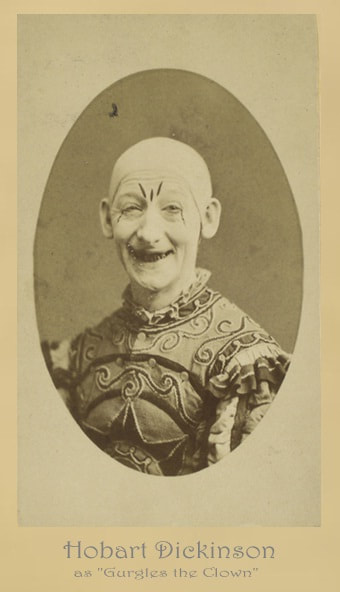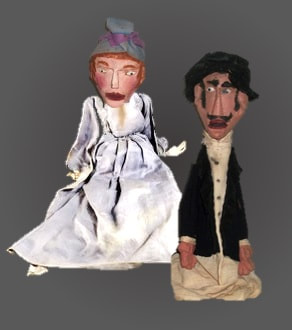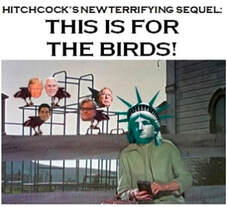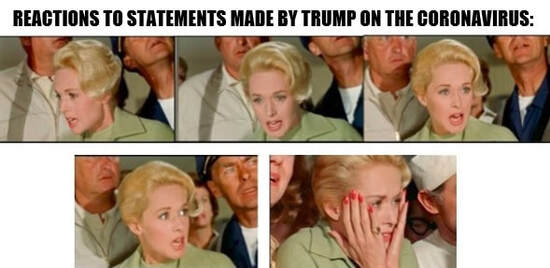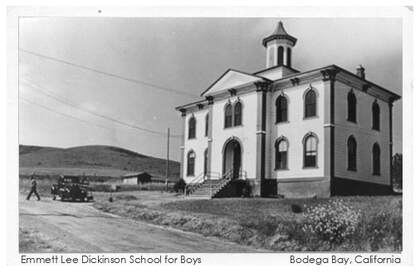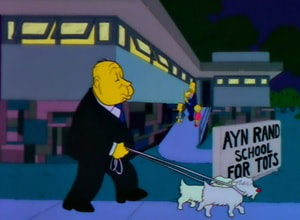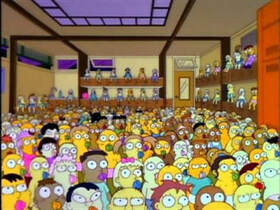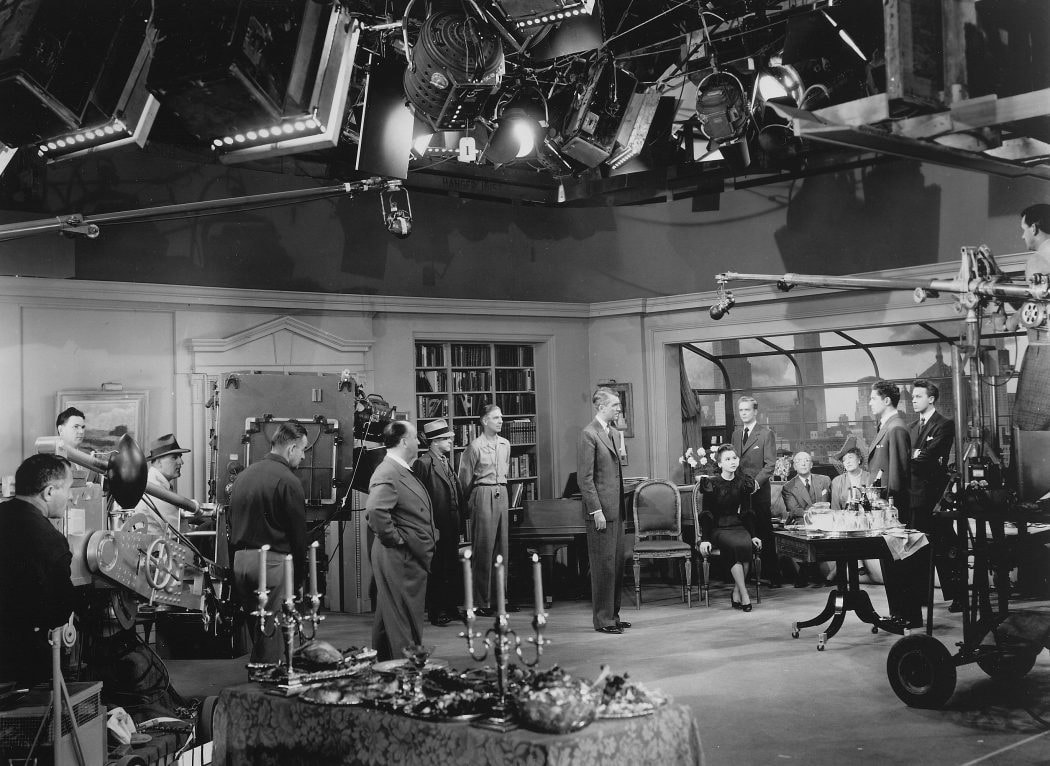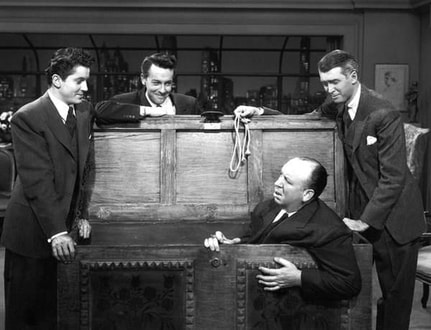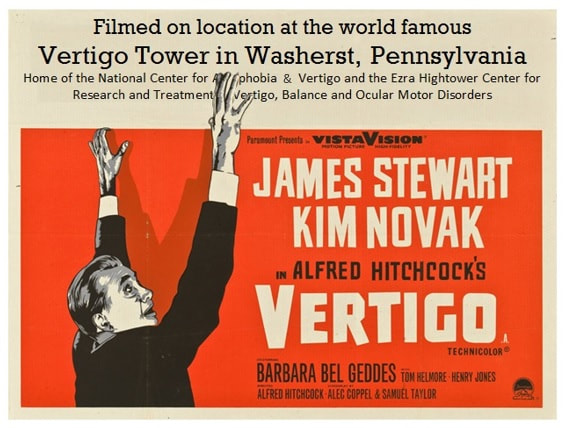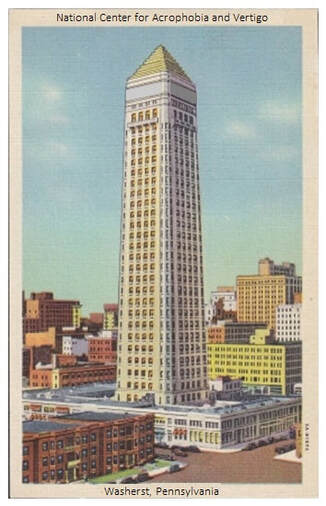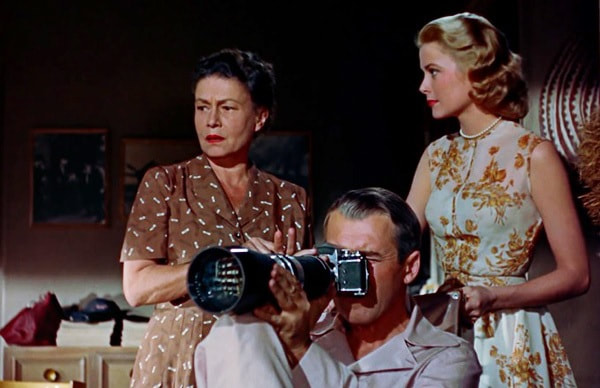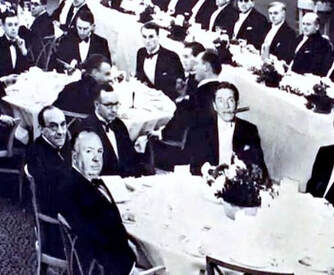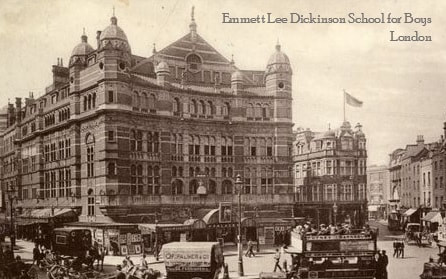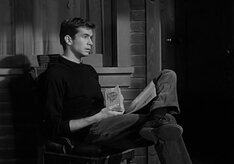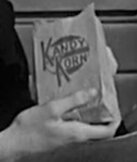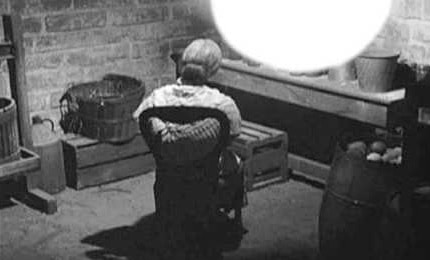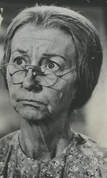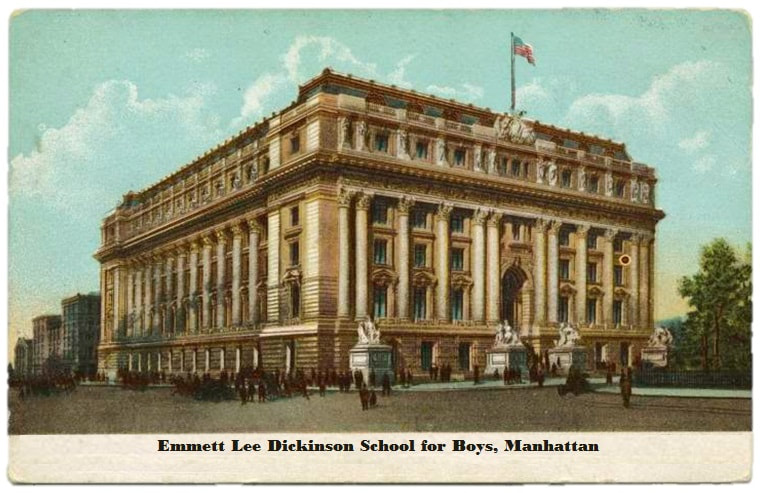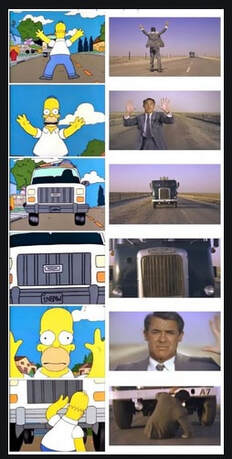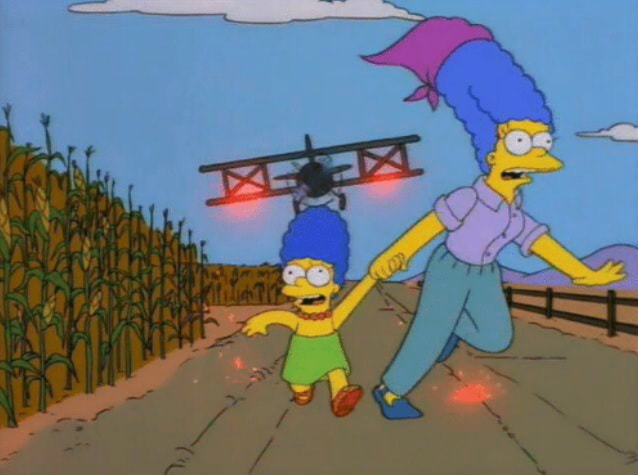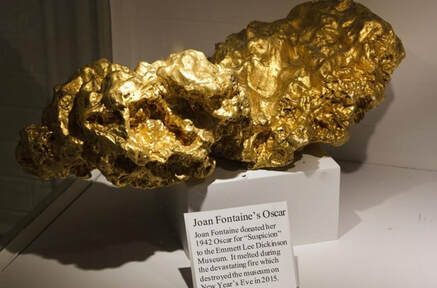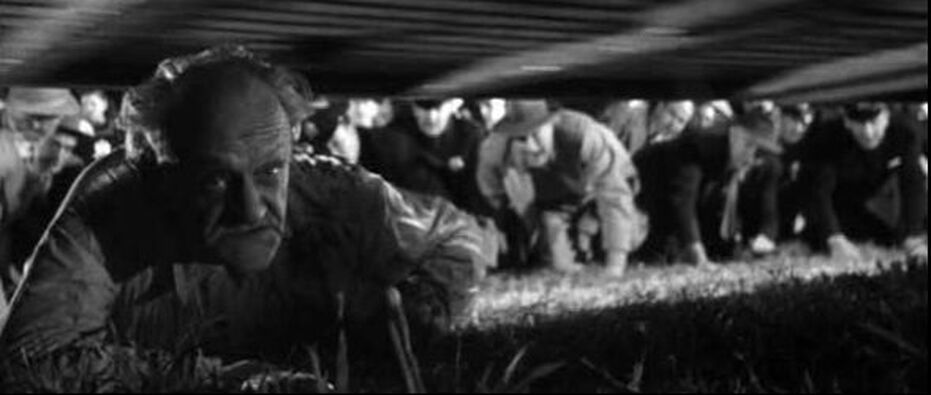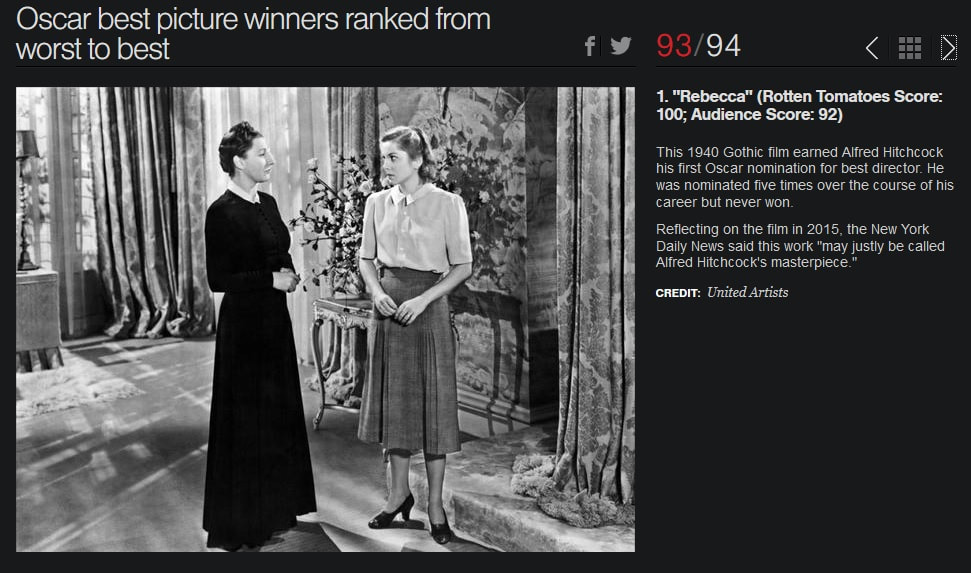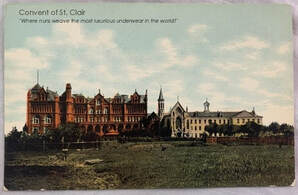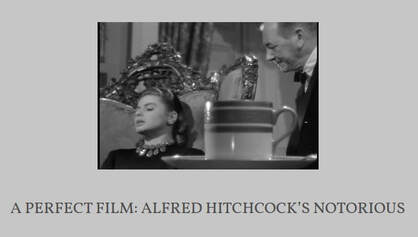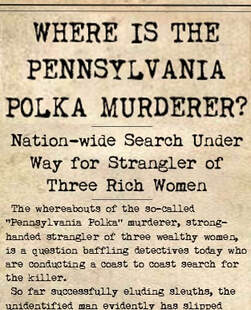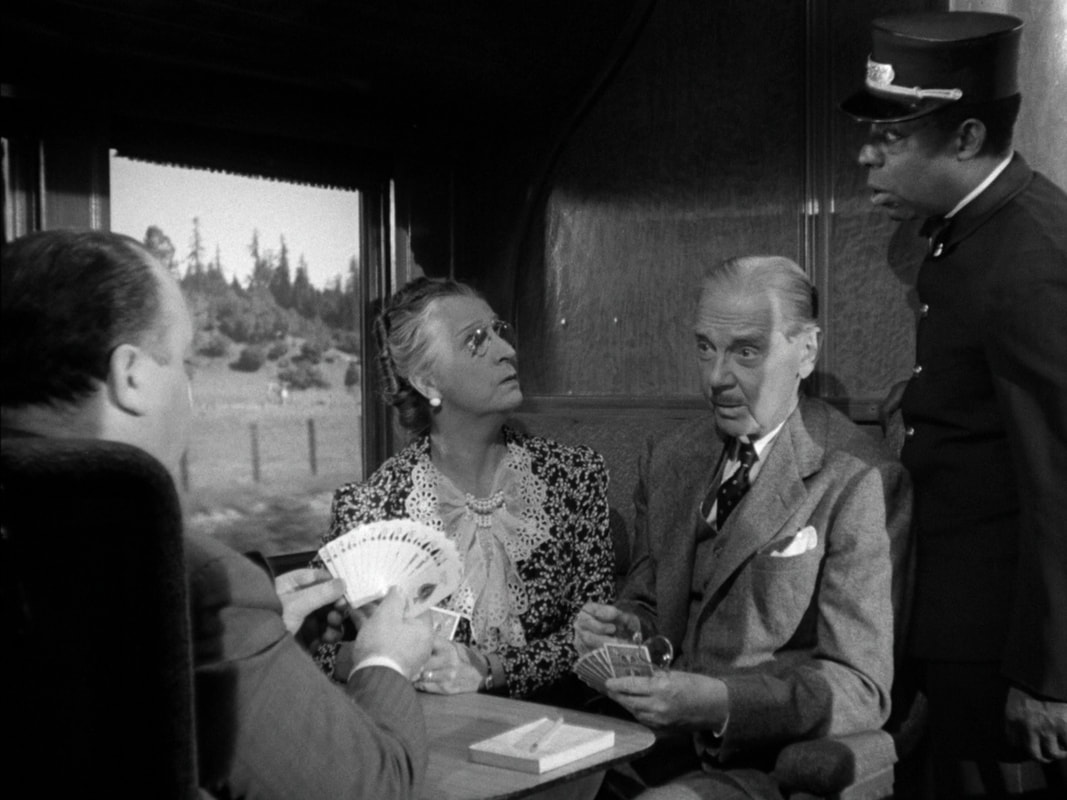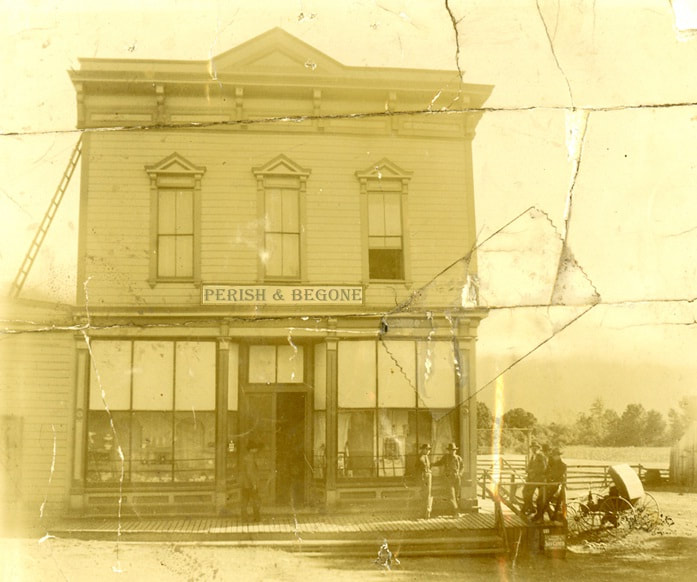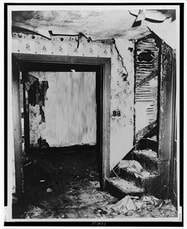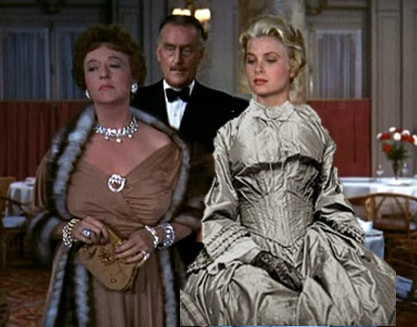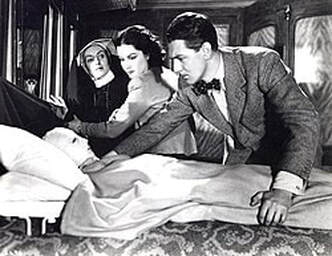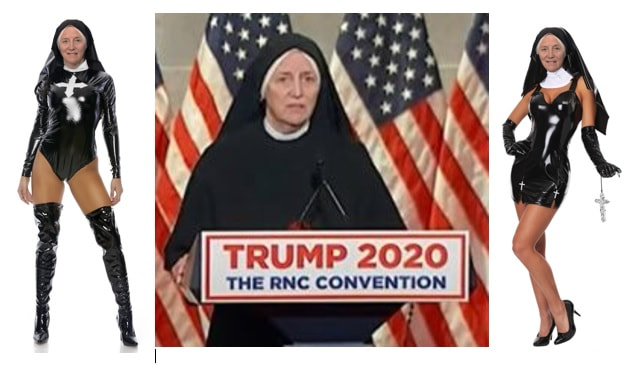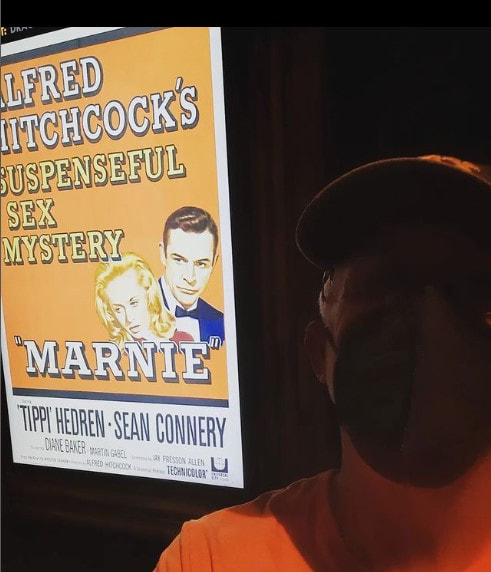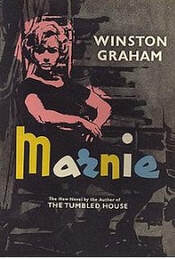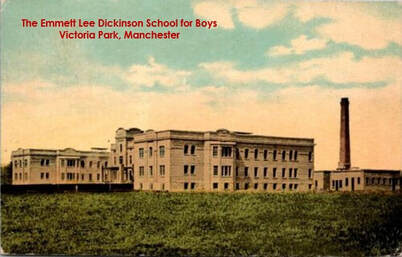Scroll down to the bottom of the page to view bonus posts to this exhibit.
From the moment Alfred Hitchcock heard the story of the discovery of Emmett Lee Dickinson's poetry -- when Washerst Pennsylvania's Sherriff Arbogast opened a coffin thought to hold Emmett Lee Dickinson's body only to discover another corpse there with pages and pages of Dickinson's poetry -- he was hooked on Dickinson.
Throughout March 2020, we hosted a special exhibit on Dickinson's influence on Alfred Hitchcock. Below are the very poems by Emmett Lee Dickinson (Emily Dickinson's third cousin, twice removed -- at her request) that inspired Hitchcock to film some of his masterpieces. In addition, we included the poems written by Emily Dickinson in response to her third cousin's poetry.
Throughout March 2020, we hosted a special exhibit on Dickinson's influence on Alfred Hitchcock. Below are the very poems by Emmett Lee Dickinson (Emily Dickinson's third cousin, twice removed -- at her request) that inspired Hitchcock to film some of his masterpieces. In addition, we included the poems written by Emily Dickinson in response to her third cousin's poetry.
THE MAN WHO KNEW TOO MUCH
Good evening (spoken with our best imitation of Sir Alfred Hitchcock) --
We begin our special exhibit "March Madness with Alfred Hitchcock" with Emmett Lee Dickinson's poem "Woke up in fear this evening," the very work which inspired Hitchcock to film his 1956 remake of "The Man Who Knew Too Much," originally filmed in 1934 by Hitchcock. That's right. Hitchcock first filmed "The Man Who Knew Too Much" in 1934 -- info HERE. However, after he read Dickinson's poem (below on the left), Hitchcock rewrote and re-filmed the movie based on the themes of Dickinson's enigmatic work.
Dickinson's poem also inspired third cousin Emily to pen her poem "Went up a year this evening" (below on the right).
We begin our special exhibit "March Madness with Alfred Hitchcock" with Emmett Lee Dickinson's poem "Woke up in fear this evening," the very work which inspired Hitchcock to film his 1956 remake of "The Man Who Knew Too Much," originally filmed in 1934 by Hitchcock. That's right. Hitchcock first filmed "The Man Who Knew Too Much" in 1934 -- info HERE. However, after he read Dickinson's poem (below on the left), Hitchcock rewrote and re-filmed the movie based on the themes of Dickinson's enigmatic work.
Dickinson's poem also inspired third cousin Emily to pen her poem "Went up a year this evening" (below on the right).
|
By Emmett Lee Dickinson:
Woke up in fear this evening! I recollect it well! Amid the bells and bravoes I had to stand and yell! Fretful – as to the outcome – Restive – found no repose – Hastened – to find a Chapel This humble Tourist rose! I talked of his returning! I’d hoped we’d have more time When, thru Storm Clouds Cantata I must look for him! Was grateful for the songs sung In life’s diverse bouquet Sang loudly with new urgency Was “Que Sera” this day Could I be heard I wondered His weeping nearer drew – I hustled to the echoes The sound in power grew – Ascended to a vision His Countenance in view Deliverance – Amazing – It’s all too much I knew! |
By Emily Dickinson:
Went up a year this evening! I recollect it well! Amid no bells nor bravoes The bystanders will tell! Cheerful – as to the village – Tranquil – as to repose – Chastened — as to the Chapel This humble Tourist rose! Did not talk of returning! Alluded to no time When, were the gales propitious – We might look for him! Was grateful for the Roses In life's diverse bouquet – Talked softly of new species To pick another day; Beguiling thus the wonder The wondrous nearer drew – Hands bustled at the moorings – The crown respectful grew – Ascended from our vision To Countenances new! A Difference – A Daisy – Is all the rest I knew! |
Below left: The poster for Hitchcock's 1934 version of "The Man Who Knew Too Much." Below center: The poster for Hitchcock's 1956 version of the movie. Below right: The true "man who knew too much" is none other than Donald "Shifty Don" Trump. Why? Click HERE for details.
TRIVIA:
|
* Originally, Hitchcock was going to film a biopic about Emmett Lee Dickinson (Emily Dickinson's third cousin, twice removed -- at her request) called "The Man Who Wrote Too Much." However, when that project evolved into "The Man Who Knew Too Much," it veered back into the realm of Dickinson after Hitchcock read Dickinson's poem "Woke up in fear this evening."
* In his youth, Jimmy Stewart, the star of the 1956 version of "The Man Who Knew Too Much," attended the Emmett Lee Dickinson School for Boys in Indiana, Pennsylvania (pictured at the right). In his autobiography, "It Was A Wonderful Life," Stewart listed "Woke up in fear this evening" as his favorite poem.
* "Que Sera, Sera" is the motto for Emmett Lee Dickinson Schools for Boys (of which, there are over 2,000 campuses world-wide). |
* Composer Bernard Herrmann, featured often in Hitchcock films, wrote the score for the 1956 film; however, a performance of Arthur Benjamin's "Storm Clouds Cantata" is used as source music for the climax of the movie -- and Bernard Herrmann is conducting the orchestra. As a mater of fact, before Doris Day enters Albert Hall -- the scene of the climax -- she passes in front of a giant theater sign advertising the concert with Bernard Herrmann (below).
|
The eighth episode of the 14th season of “The Simpsons” was entitled, “The Dad Who Knew Too Little" (above). The twelfth episode of the 5th season was called “The Boy Who Knew Too Much" (below). |
Lyrics to Benjamin's "Storm Clouds Cantata":
Soloist: There came a whispered terror on the breeze. And the dark forest shook Chorus: And on the trembling trees came nameless fear. And panic overtook each flying creature of the wild (Original: ...flying creature of the wind) And when they all had fled Soloist: All save the child — all save the child. Around whose head screaming, The night-birds wheeled and shot away. Chorus: Finding release from that which drove them onward like their prey. Finding release the storm-clouds broke. And drowned the dying moon. The storm-clouds broke — the storm clouds broke. Finding release! Addition for the 1956 remake Yet stood the trees — yet stood the trees Around whose heads screaming The singers perform in an alternation between male and female: Finding release; Finding release from that which drove them onward like their prey. |
|
Alfred Hitchcock Presents: Funeral March of a Marionette (Marche funèbre d'une marionnette) is a short piece by Charles Gounod. It was originally written for solo piano in 1872 and orchestrated in 1879. It was also the theme music for the television program “Alfred Hitchcock Presents." While residing in London, England, between 1871 and 1872, Gounod started to write a suite for piano called Suite burlesque. After completing this piece, Gounod abandoned the rest of the suite. The piece was dedicated Hobart Dickinson, the uncle of Emmett Lee Dickinson (Emily Dickinson’s third cousin, twice removed – at her request). |
|
|
Pictured at the left: Hobart Dickinson, Emmett Lee Dickinson's uncle.
Hobart Dickinson owned a novelty shop in Washerst, Pennsylvania, the birthplace of Emmett Lee Dickinson. He also managed an entertainment partnership with Dooley Dawson, known to the citizens of Washerst as “Doo-Daw”Dawson, that provided clowns, magicians, and balloon artists for children’s parties. Hobart Dickinson often performed at children's birthday parties and later gained world-wide fame as "Gurgles the Clown." Prior to developing his persona as "Gurgles," Hobart spent time in France where he created and developed the idea of "performance art." He performed all over France and Europe as Pamplemousse the Mime, and his act included his marionettes "Emily" and "Emmett Lee" (pictured at the right -- courtesy of Harvard's Houghton Library collection of Dickinson family artifacts). |
THE BIRDS
Alfred Hitchcock's 1963 horror-thriller film "The Birds" was loosely based on a 1952 story of the same name by Daphne du Maurier -- but that's just part of the story. Many scenes in the movie were inspired by if not taken directly from poems of Emmett Lee Dickinson (Emily Dickinson's third cousin, twice removed -- at her request). One famous example is the scene where a murder of crows gathers on the jungle gym at the school house as an unaware Tippi Hedren puffs a cigarette. That scene was inspired by Emmett Lee Dickinson's poem "A Bird alit a Wall" (below on the left). Dickinson's poem inspired third cousin Emily to pen her poem "A Bird came down the Walk" (below on the right).
|
By Emmett Lee Dickinson:
A Bird alit the Wall – He knew I did not see – Another on the Jungle Gym And shortly there were three, And then, there came a Fourth From a portentous Sky – And they hopped sidewise on the Wall As I let Time pass by – They glanced with rabid eyes That shared a look profound A Murder gathered there, I thought – Once I had turned Around Like one in danger, Cautious, I stood then jumped to Run As they unrolled their feathers And crowed to scare and Stun – As Oars divide the Ocean, They split the seamless sky – With Battle cries, to Birds off Shore Struck, laughing as I died. |
By Emily Dickinson:
A Bird came down the Walk -- He did not know I saw -- He bit an Angle Worm in halves And ate the fellow, raw, And then, he drank a Dew From a convenient Grass -- And then hopped sidewise to the Wall To let a Beetle pass -- He glanced with rapid eyes That hurried all abroad -- They looked like frightened Beads, I thought -- He stirred his Velvet Head Like one in danger, Cautious, I offered him a Crumb And he unrolled his feathers And rowed him softer Home -- Than Oars divide the Ocean, Too silver for a seam -- Or Butterflies, off Banks of Noon, Leap, plashless as they swim. |
Below right: Another use of a scene from "The Birds" reflecting the inane and harmful advice Trump spewed about COVID-19.
TRIVIA:
|
* The school in Bodega Bay, CA, shown in "The Birds" was once an Emmett Lee School for Boys (pictured at the right). * The song the school children sang as the crows gathered on the jungle gym was "Risseldy Rosseldy," and it was based on an old college fight cheer that Emmett Lee Dickinson created: Risseldy, Rosseldy, Hey bambassity, Nickety, nackety, Retrical quality, Willowby, wallowby, Mow, mow, mow. |
|
* A hilarious reference from "The Birds" occurs in "A Streetcar Named Marge," the second episode of The Simpsons' fourth season. When Homer arrives to pick Maggie up from the Ayn Rand School for Tots, he finds the babies all eerily sucking on their pacifiers -- reminiscent of the last scene from "The Birds." |
ROPE
Alfred Hitchcock's crime thriller Rope, filmed in 1948, was based on Emmett Lee Dickinson's short poem "A storage Chest of Silver" (below on the left). Dickinson's poem also inspired third cousin Emily to pen her poem "An Everywhere of Silver" (below on the right).
|
By Emmett Lee Dickinson:
A storage Chest of Silver With Rope inside To keep it from exposing They Took a Life – |
By Emily Dickinson:
An Everywhere of Silver With Ropes of Sand To keep it from effacing The Track called Land – |
VERTIGO
Another Hitchcock film based on a poem by Emmett Lee Dickinson is Vertigo. The 1958 film was based on "One -- was immortal once" (below on the left), and the screenplay was written by Alec Coppel and Samuel A. Taylor. Dickinson's poem also inspired third cousin Emily to pen her poem "Two -- were immortal twice" (below on the right).
|
By Emmett Lee Dickinson:
One – was immortal once – Restored by someone new – Identity – obtained – in Time – Reserved her Mystery – When his ignoble Eyes Her quality perceived Till Perilous his Vertigo – Threw his Imperative. |
By Emily Dickinson:
Two – were immortal twice – The privilege of few – Eternity – obtained – in Time – Reversed Divinity – That our ignoble Eyes The quality conceive Of Paradise superlative – Through their Comparative. |
TRIVIA:
Scenes from Vertigo were filmed on location at the National Center for Acrophobia & Vertigo and the Ezra Hightower Center for Research and Treatment of Vertigo, Balance, and Ocular Motor Disorders in historic Washerst, PA, the birthplace of Emmett Lee Dickinson (Emily Dickinson's third cousin, twice removed -- at her request).
|
|
|
Pictured at the left: The animated hit "The Simpsons" featured a nod to Vertigo in "Principal Charming," the fourteenth episode of the show's second season. |
|
|
|
REAR WINDOW
Rear Window, Hitchcock's 1954 mystery thriller, was based on Emmett Lee Dickinson's poem "A something in a summer's Day" (below on the left). Dickinson's poem inspired third cousin Emily to pen her poem with th esame opening line (below on the right).
|
By Emmett Lee Dickinson:
A something in a summer’s Day A show of tableaux burns away Which mesmerizes me. A something in a summer’s noon – I watch – a Bather -- a front room – Surveilling steadily. And still within a summer’s night As something so foul comes to light I use my glass* to see – To veil my too inspecting face I dim the sconces -- shadow my space Watching afar for me – Unwary strangers aren’t transfixed – By stories told within their midst So near my narrow bed – Still from the Rear my window’s View – Guides still my hunch to think it’s True His trusting Wife’s now Dead – So looking on – at night – I mourn Conclude the husband’s prey – And I peek, watching thro’ the panes Another summer’s Day! *Binoculars |
By Emily Dickinson:
A something in a summer's Day As slow her flambeaux burn away Which solemnizes me. A something in a summer's noon – A depth – an Azure – a perfume – Transcending ecstasy. And still within a summer's night A something so transporting bright I clap my hands to see – Then veil my too inspecting face Lets such a subtle – shimmering grace Flutter too far for me – The wizard fingers never rest -- The purple brook within the breast Still chafes its narrow bed -- Still rears the East her amber Flag -- Guides still the sun along the Crag His Caravan of Red -- So looking on — the night — the morn Conclude the wonder gay -- And I meet, coming thro' the dews Another summer's Day! |
TRIVIA:
|
Co-star Thelma Ritter was born Thelma Margaret Dickinson -- and her father's mother's brother's great uncle was Emmett Lee Dickinson's brother Jefferson Dickinson. In addition, her father, Grover Lee Dickinson, was once the headmaster of the Emmett Lee Dickinson School for Boys in Indiana, Pennsylvania -- the very school Jimmy Stewart attended in his youth.
For a short time Grace Kelly attended Bryn Mawr College -- where Emmett Lee Dickinson's granddaughter Qwerty Lee Dickinson once attended school. |
DIAL M FOR MURDER
Now that many of us are hunkering down due to the spread of the COVID-19 virus, I suppose many of you are dialing Q for Quarantine, and you have plenty of time to sit back and watch old movies -- especially the Hitchcock classics.
Did you know that "Dial M for Murder" was also based on a poem by Emmett Lee Dickinson? One of Hitchcock's favorite poems by Dickinson was "It came at last but not her Death" (below on the left). He loved the twist in the opening line -- if not her death, then whose death? Who had "occupied the House"? Who was the "assassin," why had her spouse called, and what was her "metallic Piece"?
Of course, he answered all of those questions in "Dial M for Murder."
Dickinson's poem also inspired third cousin Emily to pen her poem, "It came at last but prompter Death" (below on the right).
Did you know that "Dial M for Murder" was also based on a poem by Emmett Lee Dickinson? One of Hitchcock's favorite poems by Dickinson was "It came at last but not her Death" (below on the left). He loved the twist in the opening line -- if not her death, then whose death? Who had "occupied the House"? Who was the "assassin," why had her spouse called, and what was her "metallic Piece"?
Of course, he answered all of those questions in "Dial M for Murder."
Dickinson's poem also inspired third cousin Emily to pen her poem, "It came at last but prompter Death" (below on the right).
|
By Emmett Lee Dickinson:
It came at last but not her Death He’d occupied the House – Her pallid Furniture arranged And her metallic Piece – Her faithful spouse had kept his Date His Call had punctual been Then fright had aggrandized the Night She’d blocked the assassin. |
By Emily Dickinson:
It came at last but prompter Death Had occupied the House – His pallid Furniture arranged And his metallic Peace – Oh faithful Frost that kept the Date Had Love as punctual been Delight had aggrandized the Gate And blocked the coming in. |
TRIVIA:
Alfred Hitchcock made cameo appearances in 39 of his 52 surviving major films (his second film, The Mountain Eagle, is lost). For the films in which he appeared, he would be seen for a brief moment in a non-speaking part as an extra, such as boarding a bus, crossing in front of a building, standing in an apartment across the courtyard, or even appearing in a newspaper photograph (as seen in the film Lifeboat, which otherwise provided no other opportunity for him to appear). In "Dial M for Murder," he appeared in a photograph from an alumni reunion dinner at the Emmett Lee Dickinson School for Boys in London where Hitchcock attended school in his youth.
Below on the left: Alfred Hitchcock at an alumni reunion dinner at London's Emmett Lee Dickinson School for Boys. This photo was used for Hitchcock's cameo appearance in "Dial M for Murder." The framed photograph hung on the wall of the flat of Tony Wendice (played by Ray Milland).
Below on the right: The Emmett Lee Dickinson School for Boys in London.
Below on the left: Alfred Hitchcock at an alumni reunion dinner at London's Emmett Lee Dickinson School for Boys. This photo was used for Hitchcock's cameo appearance in "Dial M for Murder." The framed photograph hung on the wall of the flat of Tony Wendice (played by Ray Milland).
Below on the right: The Emmett Lee Dickinson School for Boys in London.
PSYCHO
Not only did events from Emmett Lee Dickinson's life inspire Alfred Hitchcock to film his horror classic "Psycho" (for example, Washerst Pennsylvania's Sherriff Arbogast opened a coffin thought to hold Emmett Lee Dickinson's body only to discover another corpse there with pages and pages of Dickinson's poetry), but Hitchcock was also inspired by Dickinson's short, enigmatic poem "His Hour with himself" (below on the left). Dickinson's poem also inspired third cousin Emily to pen her poem "Its hour with itself" (below on the right).
|
By Emmett Lee Dickinson:
His Hour with himself Her Spirit slyly shown What Terror would enthrall the Street Could Countenance disclose The Subterranean Fright The Cellar of her Soul – Thank God the padded Place he’ll stay No license now to kill. |
By Emily Dickinson:
Its Hour with itself The Spirit never shows. What Terror would enthrall the Street Could Countenance disclose The Subterranean Freight The Cellars of the Soul -- Thank God the loudest Place he made Is licensed to be still. |
TRIVIA:
|
* In computer software and media, an “Easter Egg” is an intentional inside joke, hidden message or image, or secret feature of a work. In the movie industry, a more specific subgroup of “Easter Eggs” is the “Candy Corn,” a hidden message or image in a movie that pays homage to Emmett Lee Dickinson (Emily Dickinson’s third cousin, twice removed – at her request), the inventor of America’s favorite candy, candy corn.
The practice of inserting a “candy corn” in a movie began with the 1960 production of Alfred Hitchcock’s Psycho. |
When Hitchcock made the movie, he planted the first “candy corn,” or secret tribute to Emmett Lee Dickinson. He did so by having star Anthony Perkins as Norman Bates sit on the porch of the Bates Motel enjoying a bag of candy corn (spelled “Kandy Korn” in the movie).
|
* Robert Bloch, who wrote Psycho, attended the Emmett Lee Dickinson School for Boys in Manhattan in his youth, and he was intrigued by the story of Dickinson's torrid love affairs, the rumors of his murder, and the subsequent investigation which led to the macabre discovery of his poetry -- all of which he included in his novel. From the moment that Alfred Hitchcock heard the story, he was hooked on Dickinson, and he jumped on the chance to direct a movie based on Bloch's work. Pictured at the right: The Emmett Lee Dickinson School for Boys in Manhattan. |
NORTH BY NORTHWEST
Two poems by Emmett Lee Dickinson (Emily Dickinson's third cousin, twice removed -- at her request) inspired various scenes in Hitchcock's suspense thriller "North By Northwest." "The Blunder was in estimate" (below on the left) inspired opening scenes of the movie at the Plaza Hotel and the Grand Central Terminal as well as the final scenes at Mount Rushmore. "He slipped into the Realm of Dust" (also below left) inspired the famous scene in the Indiana corn field where a biplane pilot attempted to kill "George Kaplan" -- who was actually Roger Thornhill.
Dickinson's poems inspired third cousin Emily to pen her poems "The Blunder is in estimate" and "From his slim Palace in the Dust" (both below on the right).
Dickinson's poems inspired third cousin Emily to pen her poems "The Blunder is in estimate" and "From his slim Palace in the Dust" (both below on the right).
|
By Emmett Lee Dickinson:
The Blunder was in estimate Identity was there He then heads to a Station – Meanwhile they are so near He joins them at Mt. Rushmore – Avoids a life carefree – No Friend has he that so persists As his Identity. |
By Emily Dickinson:
The Blunder is in estimate. Eternity is there We say, as of a Station -- Meanwhile he is so near He joins me in my Ramble -- Divides abode with me -- No Friend have I that so persists As this Eternity. |
|
By Emmett Lee Dickinson:
He slipped into the Realm of Dust Beneath the stalks of Corn, More lethal was the devilry That had befallen him |
By Emily Dickinson:
From his slim Palace in the Dust He relegates the Realm, More loyal for the exody That has befallen him. |
TRIVIA:
* The scene in the corn field has appeared twice in "The Simpsons":
* The real George Kaplan, Roger Thornhill, Lester Townsend, and Phillip Vandamm were all classmates of Alfred Hitchcock when he attended the Emmett Lee Dickinson School for Boys in London.
* Like Roger Thornhill, Emmett Lee Dickinson was once thought to have murdered a diplomat. However, instead of traveling north by northwest to clear his name, he escaped south by southest, and ended up clearing his name at Rushmore's Crocodile Crossing Alligator Park in Gobbler's Crossing, Alabama.
* Emmett Lee Dickinson once summered in Glen Cove, New York, and while there he was arrested for driving a horse and buggy while drunk.
* Why did Hitchcock include a scene in a corn field? One of Emmett Lee Dickinson's passions was corn. He was fascinated by the many uses of corn, from food and beverage recipes to personal care and health and wellness remedies to pharmaceutical and industrial products. He was obsessed with analyzing the calendar and weather patterns associated with the planting season. Hitchcock knew of Dickinson's love of corn -- and so he decided to include a scene in a corn field.
SUSPICION
"I was always intrigued by two enigmatic poems by Emmett Lee Dickinson," reported Alfred Hitchcock in his autobiography Dial H for Hitchcock. He was talking about "He stole along so stealthy" and "What testaments of lovers" (both below on the left), the two poems he said that inspired him to film his romantic thriller "Suspicion." Dickinson's poems also inspired third cousin Emily to pen her poems "It stole along so stealthy" and "What tenements of clover" (both below on the right).
|
By Emmett Lee Dickinson:
He stole along so stealthy Suspicion on the rise He’d hoped that she’d be wealthy Misleading notion dies – |
By Emily Dickinson:
It stole along so stealthy Suspicion it was done Was dim as to the wealthy Beginning not to own – |
|
By Emmett Lee Dickinson: What testaments of lovers Are fitting as they seem, What evidences are true When mesmerizing me – What confirmations kindle A doubt and disbelief With now alert suspicion Rounding a vaulting cliff |
By Emily Dickinson: What tenements of clover Are fitting for the bee, What edifices azure For butterflies and me – What residences nimble Arise and evanesce Without a rhythmic rumor Or an assaulting guess. |
TRIVIA:
|
* Joan Fontaine was awarded the Oscar for "Best Actress" for her performance in "Suspicion." Fontaine is the only performer to win an acting Oscar in a Hitchcock film. During her speech, she dedicated her win to Emmett Lee Dickinson (Emily Dickinson's third cousin, twice removed -- at her request) for several reasons: all twelve of her brothers had attended Emmett Lee Dickinson Schools for Boys (in various cities); she knew that Hitchcock was a lover of Dickinson's works -- and that Dickinson's poem "He stole along so stealthy" inspired Hitchcock to film "Suspicion"; and she herself was a great aficionado of Emmett Lee Dickinson's poetry.
* Following the 1941 Academy Awards Ceremony, Joan Fontaine donated her Oscar to the estate of Emmett Lee Dickinson. The statuette was on display at the Emmett Lee Dickinson Museum (above the coin-op laundromat on Dickinson Blvd in Washerst, PA) until the museum burned down on New Year's Eve 2015. The remains of her melted Oscar are pictured at the right. |
STRANGERS ON A TRAIN
"I first read Emmett Lee Dickinson's poem 'I want to hear that one is dead' when I was in high school at the Emmett Lee Dickinson School for Boys in London," reported Alfred Hitchcock in his autobiography Dial H for Hitchcock.
"The opening two lines, and the penultimate line, "That awful stranger on the Train,' stuck with me for many years," he said. "I finally realized in a dream what it would all mean for me -- and that was my film 'Strangers on a Train.'"
Dickinson's poem "I want to hear that one is dead" is below on the left. Besides inspiring Hitchcock, Dickinson's poem inspired third cousin Emily to pen her poem "I never hear that one is dead," below on the right.
"The opening two lines, and the penultimate line, "That awful stranger on the Train,' stuck with me for many years," he said. "I finally realized in a dream what it would all mean for me -- and that was my film 'Strangers on a Train.'"
Dickinson's poem "I want to hear that one is dead" is below on the left. Besides inspiring Hitchcock, Dickinson's poem inspired third cousin Emily to pen her poem "I never hear that one is dead," below on the right.
|
By Emmett Lee Dickinson:
“I want to hear that one is dead Without the chance for Life A deal annihilating Mom And I will kill your Wife.” So might he in his Daily grind Fall into the abyss? Would Madness, would it once or twice Find dawning Consciousness? Beliefs and Banter, from the Tongue Were Terror when all told An eerie Tone commensurate To strike them instant Dead He did not know the man so bold Who dared him in the Place That awful stranger on the Train The Danger he would face – |
By Emily Dickinson:
I never hear that one is dead Without the chance of Life Afresh annihilating me That mightiest Belief, Too mighty for the Daily mind That tilling its abyss, Had Madness, had it once or twice The yawning Consciousness, Beliefs are Bandaged, like the Tongue When Terror were it told In any Tone commensurate Would strike us instant Dead I do not know the man so bold He dare in lonely Place That awful stranger Consciousness Deliberately face – |
TRIVIA:
|
* One of the most memorable single shots in the Hitchcock canon is Miriam's strangulation by Bruno on the Magic Isle. The murder is shown as a reflection in the victim's eyeglasses which have been jarred loose from her head and dropped to the ground -- and the glasses themselves were on loan from the Emmett Lee Dickinson Museum. The glasses once belonged to Emmett Lee Dickinson's oldest sister's daughter, Qwerty Kathleen Dickinson Arbuthnot.
* The explosion at the end is triggered by the attempts of a carnival man to stop the ride after crawling under the whirling carousel deck to get to the controls in the center. It was not a trick shot: the man actually had to crawl under the spinning ride, just inches from possible injury. "Hitchcock told me that this scene was the most personally frightening moment for him in any of his films", wrote biographer Charlotte Chandler. "The man who crawled under the out-of-control carousel was not an actor or a stuntman, but carousel operator Everett Herwig Dickinson, the grandson of Emmett Lee Dickinson's brother Lewis Clark Dickinson. |
|
'If Dickinson had raised his head even slightly", Hitchcock said, "it would have gone from being a suspense film into a horror film."
Below:
Below:
REBECCA
Check this out: All 92 Oscar Best Picture Winners Ranked -- from Worst to Best, HERE. Guess which movie ended up in the top spot? Alfred Hitchcock's "Rebecca."
"Rebecca," which the New York Daily News said "may justly be called Alfred Hitchcock's masterpiece," was based on Emmett Lee Dickinson's Gothic masterpiece, "She learned -- at last -- what Home could be" (below on the left). Dickinson's poem inspired third cousin Emily to pen her poem "I learned -- at least -- what Home could be" (below on the right).
|
By Emmett Lee Dickinson:
She learned – at last – what Home could be – How ignorant she had been The pretty ways of Manderley How awkward when with Him Round their new Fireside – just the two – The patter – of their Way – Whose Memory drowned her, like the Call Of the Neighboring Sea – What Mornings in their Garden – passed – What Nights – for them – to seem With only Friends to interrupt The Ripple in her Dream – The Task for Both – When Time was done – The Problem – for the Sire – A trial – of murderous effect – A Scuffle – and a Fire – The Afternoons – Together spent – And Twilight – for two Souls – Some trickery a former life – Seen finally – thro the holes She’d not Returned – that Night – to Home – And then away it came to pass – A new – defining – case – The Details took them to the Scene – Transfixed – his Poker face – There was a Home A Home and boat – For that Place by the sea – Depicts her – in a Sinking Boat – Where Rebecca’s known – to be – |
By Emily Dickinson:
I learned – at least – what Home could be -- How ignorant I had been Of pretty ways of Covenant – How awkward at the Hymn Round our new Fireside – but for this – This pattern – of the Way – Whose Memory drowns me, like the Dip Of a Celestial Sea – What Mornings in our Garden – guessed – What Bees – for us – to hum – With only Birds to interrupt The Ripple of our Theme – And Task for Both – When Play be done – Your Problem – of the Brain – And mine – some foolisher effect – A Ruffle – or a Tune – The Afternoons – Together spent – And Twilight – in the Lanes – Some ministry to poorer lives – Seen poorest – thro' our gains – And then Return – and Night – and Home – And then away to You to pass – A new – diviner – care – Till Sunrise take us back to Scene – Transmuted – Vivider – This seems a Home – And Home is not – But what that Place could be – Afflicts me – as a Setting Sun – Where Dawn – knows how to be – |
TRIVIA:
* Food for thought: Supposedly the only "bad guy" not punished in a Hitchcock movie is Gavin Elster (portrayed by Tom Helmore) in "Vertigo," the college friend of detective John "Scottie" Ferguson (Jimmy Stewart) who hired the private eye to follow his wife, Madeleine, in a complicated murder plot hatched to take advantage of Scottie's fear of heights. Hmmm...but then there is George Fortescue Maximilian "Maxim" de Winter (portrayed by Laurence Olivier) in "Rebecca." Did he get away with murder (albeit, second degree murder)? #JustAsking
* When Mrs. de Winter goes into the room to help Mr. Crawley, she sits down in a chair that appears again in "Suspicion" (1941) and "Dial M for Murder" (1954). That chair once belonged to Emmett Lee Dickinson, and it was the very chair he sat in when he composed "She learned -- at last -- what Home could be," the poem that inspired "Rebecca." Hitchcock bought it at a second-hand furniture store in Hollywood in 1941.
* When Mrs. de Winter goes into the room to help Mr. Crawley, she sits down in a chair that appears again in "Suspicion" (1941) and "Dial M for Murder" (1954). That chair once belonged to Emmett Lee Dickinson, and it was the very chair he sat in when he composed "She learned -- at last -- what Home could be," the poem that inspired "Rebecca." Hitchcock bought it at a second-hand furniture store in Hollywood in 1941.
|
* This is an actual quote from the movie when Mrs. Danvers showed the second Mrs. De Winter Rebecca's bedroom: "He was always giving her expensive gifts, the whole year round. I keep her underwear on this side. They were made specially for her by the nuns in the Convent of St. Claire."
Hitchcock included this line because he knew that the nuns in the Convent of St. Claire had woven luxurious underwear for Emmett Lee Dickinson. Pictured at the right: Convent of St. Clair, "Where nuns weave the most luxurious underwear in the world." (Click to enlarge.) |
BONUS 1: NOTORIOUS
Posted in April 2020: Yes, March has ended -- and thusly our exhibit "March Madness with Alfred Hitchcock" has ended (note the word "March" in the exhibit's title). However, we are posting a bonus, darkerly (yes, darkerly) poem, Emmett Lee Dickinson's "A Soul unto herself" (below on the left), the very poem that inspired Alfred Hitchcock to film his classic "Notorious." His poem also inspired third cousin Emily to pen her poem "The Soul unto itself" (below on the right).
|
By Emmett Lee Dickinson:
A Soul unto herself In a notorious bind With a most analyzing Spy – And Enemy – entwined – Secure against their plot Their treason was the key – Herself – if Poisoned – by herself The Soul must stand to leave |
By Emily Dickinson:
The Soul unto itself Is an imperial friend – Or the most agonizing Spy – An Enemy – could send – Secure against its own – No treason it can fear – Itself – its Sovereign – of itself The Soul should stand in Awe – |
We were inspired to post our bonus poem re: "Notorious" because of two recent findings. First, from "F for Films," we found this tribute, "A Perfect Film: Alfred Hitchcock's Notorious" -- HERE. Second, we stumbled over "The History of Literature Podcast," specifically episode 192 from October 2019, the show's tribute to the films of Alfred Hitchcock -- HERE. In the episode, you will hear about the ingenious shot with the coffee cup (below on the left), you will be introduced to the word, "darkerly," and much more!
BONUS 2: SHADOW OF A DOUBT
|
Posted in April 2020: In 1874, the country was in the grips of an intense drama that played out over the course of more than three years.
In 1872, 1873 and 1874, three rich widows were murdered -- one each year -- in Washerst, Pennsylvania (the birthplace of Emmett Lee Dickinson, Emily Dickinson's third cousin, twice removed -- at her request). Each woman had been strangled on Śmigus-dyngus, or "Wet Monday," a celebration held on Easter Monday when boys throw water over girls and spank them with pussy willow branches, and girls do the same to boys These festivities are followed with a wild afternoon of door-to-door processions with the boys dressed as bears and then a rowdy evening of kielbasas, boiled cabbage and polka dancing! For three years in a row, rich widows were found strangled to death after the Śmigus-dyngus festivities. In 1872 Zuzanna Wojciechowski was found in a corn silo on Kacper Abramczyk's soy farm, in 1873 Olga Rybkarpleszczokonkutas' body was left in the gutter of lane 6 of the Bartnicki's Family Bowling Alley, and in 1874 the body of Natasza Aurelia Gadzinka was found stuffed in a rain barrel outside Szymon Kowalski's Pierogi Hut. |
Alfred Hitchcock came up with the idea for his suspense thriller "Shadow of a Doubt" after reading various accounts of these murders and after reading Emmett Lee Dickinson's now-classic poem "Sweet heirs have perished here (below on the left). Dickinson's poem also inspired third cousin Emily to pen her poem "Sweet hours have perish here (below on the right).
|
By Emmett Lee Dickinson:
Sweet heirs have perished here Before the waltz played out – Within a small town hopes betrayed – In shadows of a doubt |
By Emily Dickinson:
Sweet hours have perished here, This is a mighty room – Within its precincts hopes have played – Now shadows in the tomb |
TRIVIA:
|
Alfred Hitchcock -- who attended the Emmett Lee Dickinson School for Boys in London in his youth -- was a true aficionado of Dickinson's life and work, and as you can see from this special exhibit, many of Dickinson's poems inspired Sir Alfred.
|
BONUS 3: THE 39 STEPS
Posted in May 2020: In his autobiography Dial H for Hitchcock, Alfred Hitchcock disclosed that Emmett Lee Dickinson's short, enigmatic poem "There came a warning of a spy" (below on the left) stayed with him for years. "I read that poem as a boy," he said, "and I pondered it and re-pondered it throughout the years. Then one night as I was puzzling over the meaning of the poem, I tripped on a step on my way downstairs to retrieve some morsels of candy corn for a refreshment, and the idea for the movie ‘The 39 Steps’ came to me in a flash."
Dickinson's poem also inspired his third cousin Emily to pen her poem "There comes a warning like a spy" (below on the right).
Dickinson's poem also inspired his third cousin Emily to pen her poem "There comes a warning like a spy" (below on the right).
|
By Emmett Lee Dickinson:
There came a warning of a spy A death and get-away Concealing steps with cloak and stealth And memories at play – |
By Emily Dickinson:
There comes a warning like a spy A shorter breath of Day A stealing that is not a stealth And Summers are away – |
TRIVIA:
|
* Robert Donat starred as Richard Hannay in the film. "Donat" was Robert Donat's stage name. His real name was Robert Donut. His sister Glaze, who endured years of bullying because of her name, recommended the change. * In his youth, Emmett Lee Dickinson lived with his family in the basement of the Perish & Begone Funeral Parlor (pictured at the right), owned by brothers Eberhard and Egan Perish and Caldwell Begone. There were 39 steps down from the lobby of the funeral parlor to the floor of the Dickinson’s apartment (pictured at the far right). |
* Mr. Memory, the amazing man who committed "50 new facts to his memory every day" (portrayed by Wylie Watson in the film), was based on Emmett Lee Dickinson’s brother Lucas – although according to his biographer, Lucas Dickinson only committed forty-seven new facts to his memory each day.
BONUS 4: TO CATCH A THIEF
Posted in June 2020: Two short poems by Emmett Lee Dickinson inspired Hitchcock to film "To Catch a Thief": "'It wasn't me' implored the Thief!" and "The Sweets of Pillage, can be known" (below on the left). His poems also inspired Emily Dickinson to pen her poems "'Remember me' implored the Thief" and "The Sweets of Pillage, can be known" (below on the right).
|
By Emmett Lee Dickinson:
“It wasn’t me” implored the Thief! Although they don’t believe! To Guests “Today in Paradise” He gave his guarantee. That Criminal does still remain When all the Jewels are Lost He’ll have to solve this mightiest case Of compensated Trust. Of all he is allowed to hope For once the Story’s penned That this did end with most he feared An unexpected Friend. |
By Emily Dickinson:
"Remember me" implored the Thief! Oh Hospitality! My Guest "Today in Paradise" I give thee guaranty. That Courtesy will fair remain When the Delight is Dust With which we cite this mightiest case Of compensated Trust. Of all we are allowed to hope But Affidavit stands That this was due where most we fear Be unexpected Friends. |
|
By Emmett Lee Dickinson:
The Sweets of Pillage, can be known To no one but the Thief – But fashion him for Honesty His tale’s beyond Belief – |
By Emily Dickinson:
The Sweets of Pillage, can be known To no one but the Thief – Compassion for Integrity Is his divinest Grief – |
TRIVIA:
Designer Edith Head created the costumes for "To Catch a Thief." She had previously created costumes for the Great Hall of Wax Figures in the Emmett Lee Dickinson Museum (above the coin-op laundromat on Dickinson Boulevard in Washerst, PA) when she dressed the wax figures of Emmett Lee Dickinson's five wives (pictured below on the left) -- and she made various costumes for Grace Kelly based on this past work.
BONUS 5: THE LADY VANISHES
Posted in August 2020: When he attended the Emmett Lee Dickinson School for Boys in London, Alfred Hitchcock took many classes on Emmett Lee Dickinson and his poetry. He said that the short, enigmatic poem "So has a Lady vanished" (below on the left) gave him the idea for his 1938 hit "The Lad Vanishes." Dickinson's poem also inspired Emily Dickinson to pen her poem "'So has a Daisy vanished" (below on the right).
|
By Emmett Lee Dickinson:
So has a Lady vanished From the train today – So tiptoed her sure companion Though Powerless to sway – Deep now in crime scene troubles Since the departing ride – Seeking – snooping – swooning Was she then a Spy? |
By Emily Dickinson:
So has a Daisy vanished From the fields today – So tiptoed many a slipper To Paradise away – Oozed so in crimson bubbles Day's departing tide – Blooming – tripping – flowing Are ye then with God? |
TRIVIA:
A major flaw in the script occurs when Iris Henderson, played by Margaret Lockwood, suspects that a nun who is traveling with Dr. Hartz is a co-conspirator in the plot to kidnap Mrs. Froy, a governess and music teacher who is returning home to England. Lockwood as Henderson tells her suspicions to Gilbert Redman, played by Michael Redgrave, the one and only person who believes Henderson's tale of a vanishing lady:
Iris Henderson : Did you notice the nun in there with the patient?
Gilbert : No, not really...
Iris Henderson : Nuns don't wear high heels.
However, there is one order of nuns that does wear high heels and high-heeled boots -- the Little Workers for White Supremacy for Jesus and Mary and Donald, the very order of Sister Deirdre “Dede” Byrne, the nun who spoke at the recent Republican National CONvention.
Below left: Margaret Lockwood and Michael Redgrave -- as Iris Henderson and Gilbert Redman -- examine the patient under the care of the nun in high heels (played by Catherine Lacey). Below right: Sister Deirdre “Dede” Byrne of the Little Workers for White Supremacy for Jesus and Mary and Donald.
BONUS 6: MARNIE
Posted in August 2022: A well-known fact in the entertainment industry is that director Alfred Hitchcock LOVED the poetry of Emmett Lee Dickinson (Emily Dickinson's third cousin, twice removed -- at her request), and as you know, we ran this special exhibit about the Hitchcock-Dickinson connection way back in March of 2020,
Now, more than two years later, we have added this bonus post to address one of the more glaring omissions from this exhibit by posting the Dickinson poem that inspired Hitchcock's 1964 film "Marnie." As a matter of fact, Dickinson also inspired author Winston Graham who said that he based his novel "Marnie" on Dickinson's poem "She had a quiet seeming Way." Graham, who attended the Emmett Lee School for Boys in Victoria Park, Manchester, England, said that Dickinson's poetry influenced him profoundly, and that everything he wrote "had its roots in the lines and life of Emmett Lee Dickinson."
Dickinson's "She had a quiet seeming Way" is below on the left. His poem also inspired his third cousin Emily to pen her poem "It was a quiet seeming Day," below on the right.
Now, more than two years later, we have added this bonus post to address one of the more glaring omissions from this exhibit by posting the Dickinson poem that inspired Hitchcock's 1964 film "Marnie." As a matter of fact, Dickinson also inspired author Winston Graham who said that he based his novel "Marnie" on Dickinson's poem "She had a quiet seeming Way." Graham, who attended the Emmett Lee School for Boys in Victoria Park, Manchester, England, said that Dickinson's poetry influenced him profoundly, and that everything he wrote "had its roots in the lines and life of Emmett Lee Dickinson."
Dickinson's "She had a quiet seeming Way" is below on the left. His poem also inspired his third cousin Emily to pen her poem "It was a quiet seeming Day," below on the right.
|
By Emmett Lee Dickinson:
She had a quiet seeming Way - There was no harm in stealth or lie - Till with a wedded man She spied an accidental Red A swirling Hue, one would have said To stop Her master Plan - And when her Life begun to jar And Bosses appeared with a roar What Human Nature hid She comprehended with an Awe When she with Resolution saw Her Trauma as a Child |
By Emily Dickinson:
It was a quiet seeming Day- There was no harm in earth or sky - Till with the setting sun There strayed an accidental Red A strolling Hue, one would have said To westward of the Town - But when the Earth begun to jar And Houses vanished with a roar And Human Nature hid We comprehended by the Awe As those that Dissolution saw The Poppy in the Cloud |
TRIVIA:
Pictured below left: I saw Alfred Hitchcock's "Marnie" on the Big Screen last week. Center: The movie led me to research Winston Graham's novel "Marnie," and I discovered that it was inspired by Emmett Lee Dickinson's poem "She had a quiet seeming Way." Right: The Emmett Lee Dickinson School for Boys in Victoria Park, Manchester, England, where author Winston Graham attended school.

